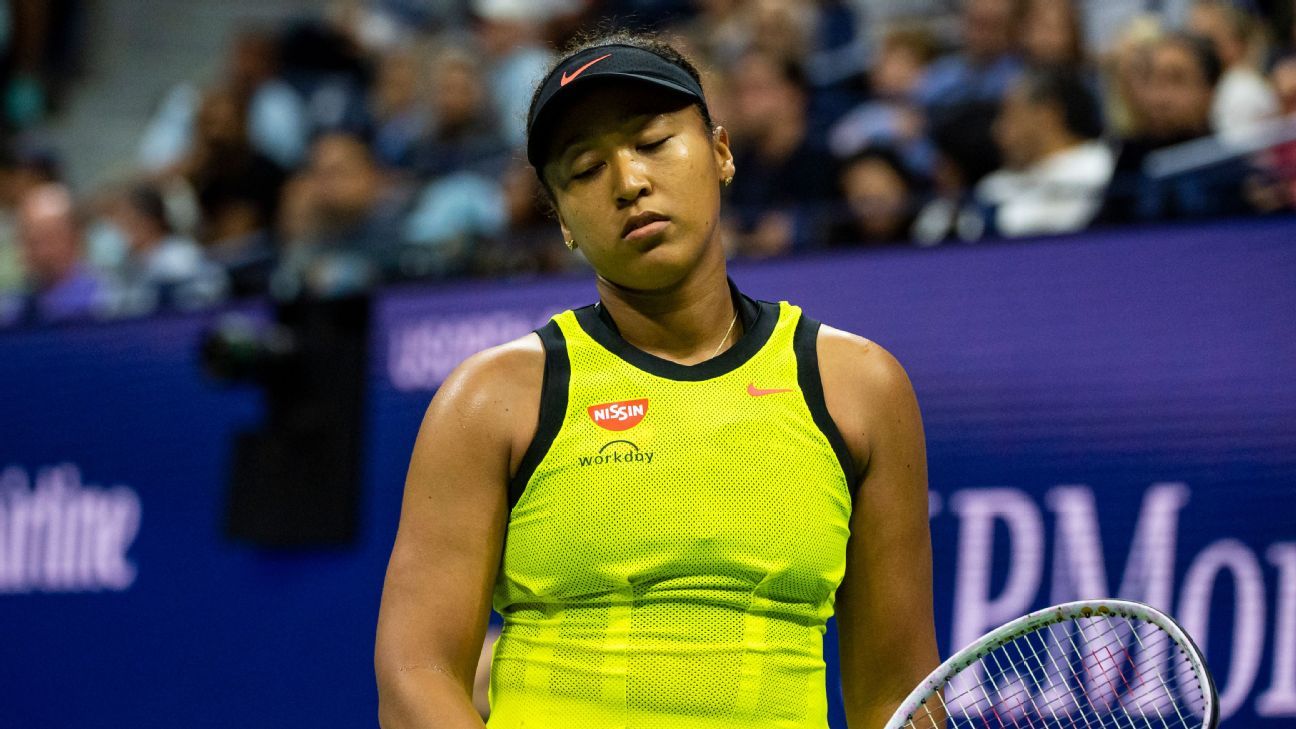Yes, she was crying in her US Open postmatch news conference, crying as she struggled to find the right words so she could share what was on her mind, but each time the moderator tried to end it, assuming Osaka didn’t want to continue, Osaka overruled him.
Basically, I feel like I’m kind of at this point where I’m trying to figure out what I want to do.
It was a stunning moment, and it might take on extra weight in the coming months — and years — if Osaka never plays professional tennis again.
Ever since Osaka withdrew from the French Open after being informed she’d be fined increasing amounts if she didn’t consent to postmatch interviews, it felt as if Osaka was asking, just for a while, to let her tennis speak for itself.
Maybe instead of longing for sound bites, we might learn something by slowing down and observing, letting her physical gifts reverberate in our consciousness, because a perfectly struck forehand has a language all its own.
The last time she’d played a match in Arthur Ashe Stadium, she’d walked away with her second US Open trophy.
Most tennis players do this, unconsciously fidgeting to quiet their mind before the ball is in the air, the moment when they ask instinct and training to take over.
Osaka likes to blow air on her fingers before she dribbles the ball, likes to hold it up and nod to her opponent before she serves, a small reminder the start of a point shouldn’t be a surprise.
Bouzkova, a 23-year-old from Prague, handled these lightning bolts with more vigor than I might have expected, stepping into balls with a piercing two-handed backhand that made Osaka run and change directions, even flustering her occasionally.
She thundered a serve out wide, her right arm uncoiling in a blur, and Bouzkova flailed in desperation but could do nothing more than deflect it off the frame of her racket.
She would win only one game the rest of the match, rarely forcing Osaka to win extended rallies.
Osaka jogged over to her bag, rummaged inside and retrieved something, an Olympic pin she handed to the little girl.
In February, she captured her fourth career Grand Slam title, winning the Australian Open for the second time, dominating the draw and losing just one set on her way to the title.
During her rise, it was as good a marriage of grace and power as anything in sports.
She needed reps to consistently harness it, but a year later, she would run Serena Williams ragged with the same shots on the same court to win her first Grand Slam title.
When she drew Fernandez in the third round after a walkover in the second, it felt like a dangerous matchup.
Every modern tennis player uses a version of this method to generate power, swinging the core instead of the arm, an evolution that, on the women’s side, probably began with Steffi Graf before it was perfected by the Williams sisters.
But the deeper into the match she went Friday, the more obvious it was that something wasn’t right, either with her game or with her state of mind.
She hit a forehand wide to fall behind 4-0, then slammed her racket into the ground, drawing a chorus of jeers from the crowd as she sheepishly walked to the net to retrieve it.
When Fernandez won a point in the second game with a shot that clipped the net, Osaka responded by firing the ball into the stands in anger.
Osaka tried to compose herself between points, taking deep breaths and an extra second to fiddle with the strings of her racket while her back was to the court, but all that accomplished was drawing jeers from the crowd.
An hour later, she was wiping away tears, but adamant that no one was going to stop her from saying what she wanted — what she needed to say.
